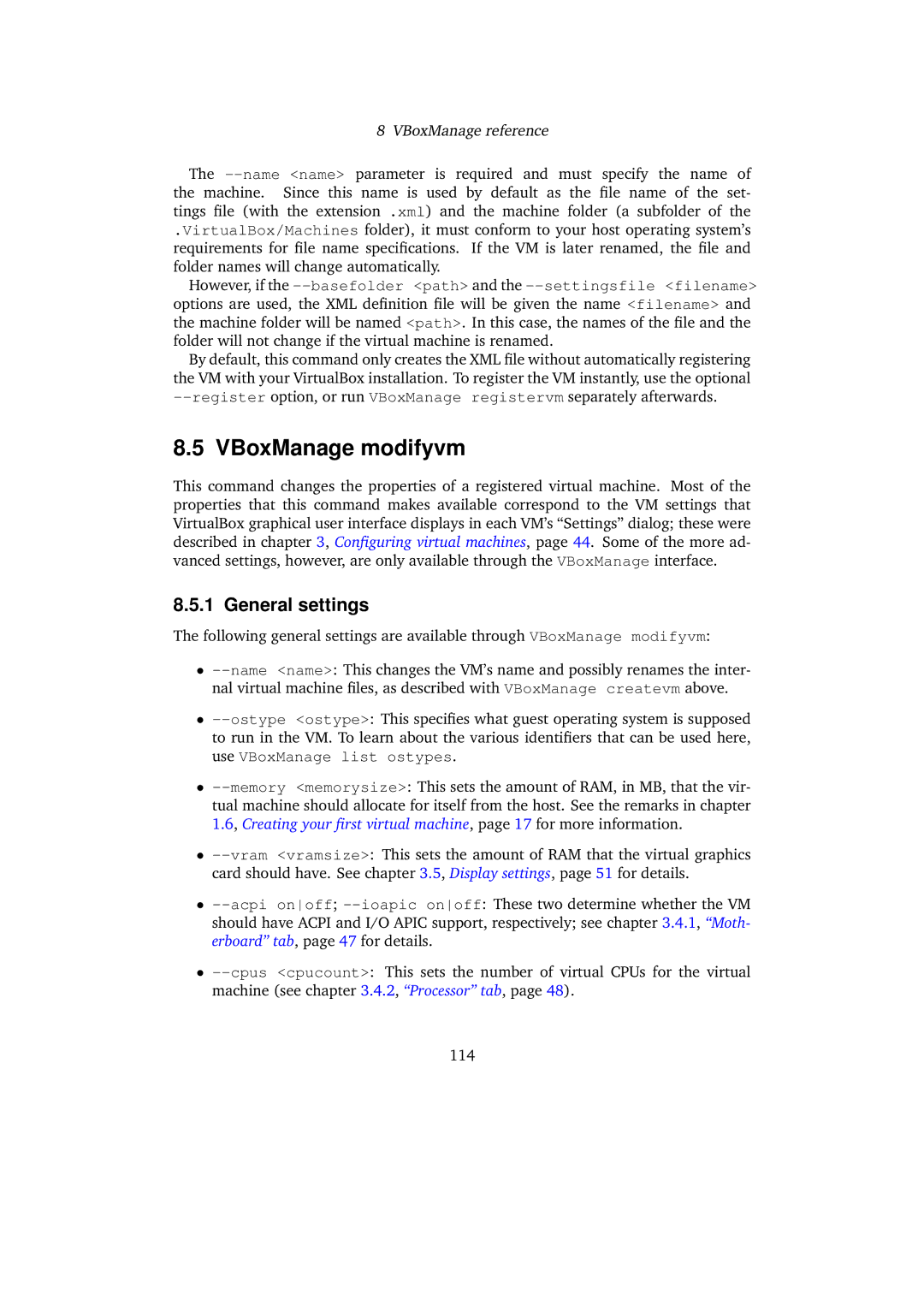8 VBoxManage reference
The --name <name> parameter is required and must specify the name of the machine. Since this name is used by default as the file name of the set- tings file (with the extension .xml) and the machine folder (a subfolder of the
.VirtualBox/Machines folder), it must conform to your host operating system’s requirements for file name specifications. If the VM is later renamed, the file and folder names will change automatically.
However, if the --basefolder <path> and the --settingsfile <filename> options are used, the XML definition file will be given the name <filename> and the machine folder will be named <path>. In this case, the names of the file and the folder will not change if the virtual machine is renamed.
By default, this command only creates the XML file without automatically registering the VM with your VirtualBox installation. To register the VM instantly, use the optional --register option, or run VBoxManage registervm separately afterwards.
8.5 VBoxManage modifyvm
This command changes the properties of a registered virtual machine. Most of the properties that this command makes available correspond to the VM settings that VirtualBox graphical user interface displays in each VM’s “Settings” dialog; these were described in chapter 3, Configuring virtual machines, page 44. Some of the more ad- vanced settings, however, are only available through the VBoxManage interface.
8.5.1 General settings
The following general settings are available through VBoxManage modifyvm:
•--name <name>: This changes the VM’s name and possibly renames the inter- nal virtual machine files, as described with VBoxManage createvm above.
•--ostype <ostype>: This specifies what guest operating system is supposed to run in the VM. To learn about the various identifiers that can be used here, use VBoxManage list ostypes.
•--memory <memorysize>: This sets the amount of RAM, in MB, that the vir- tual machine should allocate for itself from the host. See the remarks in chapter 1.6, Creating your first virtual machine, page 17 for more information.
•--vram <vramsize>: This sets the amount of RAM that the virtual graphics card should have. See chapter 3.5, Display settings, page 51 for details.
•--acpi onoff; --ioapic onoff: These two determine whether the VM should have ACPI and I/O APIC support, respectively; see chapter 3.4.1, “Moth- erboard” tab, page 47 for details.
•--cpus <cpucount>: This sets the number of virtual CPUs for the virtual machine (see chapter 3.4.2, “Processor” tab, page 48).
